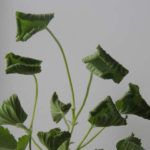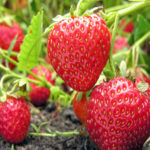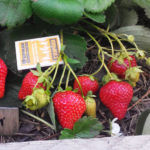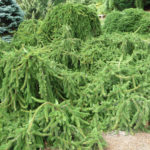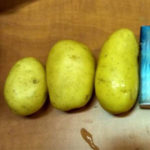Thuja folded Vipcord
In landscape design, decorative conifers of small sizes have been very popular for a long time. Especially often in gardens, parks, squares, you can see various types of western thuja. But also Thuja folded received considerable distribution. For example, its version of Vipcord (Thuja plicata Whipcord) is able to refresh the atmosphere of any territory due to its unusual appearance.
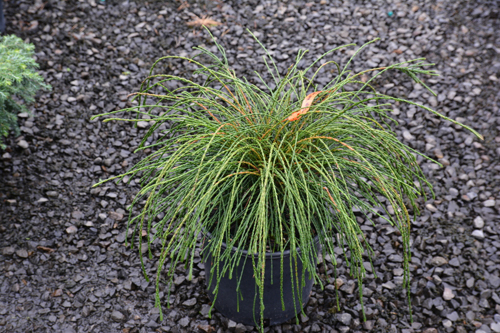
Description of the variety
The specified evergreen plant is not very large. Its height in an adult state varies from 0.5 to 1 m, while in the girth the culture is about 150 cm.The 10-year-old ephedra reaches only 30 cm in height and about 0.6 m in diameter, from which one can conclude about the rather slow growth of the bush. An interesting fact: the synonymous name of the culture sounds like Thuja gigantea Whipcord, which means "thuja giant Vipcord". It is explained by the ability of an evergreen shrub to grow in the wild up to 60 m in height.
This folded thuja received an unusual name because of its cord-like shoots: from English the word "Whipcord" is translated as "twine". They are slender, drooping and have little branching tendency. Covers the stems of the bush, tightly pressing against their surface, scaly needles with pointed tips, a characteristic shine, painted in a dark green color. In winter, the shade of the scales becomes bronze. The crown of the plant has a flat, nest-like shape.
The Vipkord variety is not too frost-resistant: its health deteriorates even at minus 8 ºС. But the ephedra is not afraid of strong, gusty winds and is rarely damaged by both pests and fungal diseases. In addition, this plant can be safely called absolutely unpretentious.
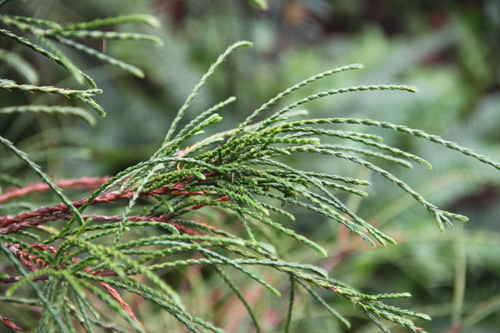
Features of agricultural technology
The culture develops well in sunlit areas. She also feels good in partial shade. So the choice of a suitable place in the garden to place this evergreen shrub is up to you. The only thing to avoid is planting the plant in places where it will be exposed to direct sunlight throughout the day.
The ephedra is not picky about soils, however, to ensure a decorative appearance, it is better to plant thuja in fertile, drained, moisture and air permeable soil. An extreme deficiency in the substrate of nutrients will lead to a slowdown in the growth of the shrub and thinning of its crown. A planting hole is prepared in advance. Its size should be twice that of the root system of the seedling. Lay a layer of drainage material at the bottom of the pit: a mixture of sand and fine gravel. After lowering the plant into the hole and covering the roots with earth, pay attention to the root collar: you need to ensure that it is at ground level. If you ignore this recommendation, it is realistic to soon lose the shrub due to its decay.
The plan of measures for the care of the variety includes:
- Watering. They should be regular, since the drying out of the earthy coma is unacceptable. A young plant should be watered once a week, an adult - a little less often (1 time in 10 days). Regardless of age, the culture needs sprinkling of the crown. The more often you do this procedure, the more comfortable the shrub will be. Sprinkling has as its purpose to wash away dust from the surface of the needles, increase the air humidity around the ornamental ephedra and improve at times the access to the plant of oxygen. For irrigation, as well as for sprinkling the crown, use soft water at room temperature.
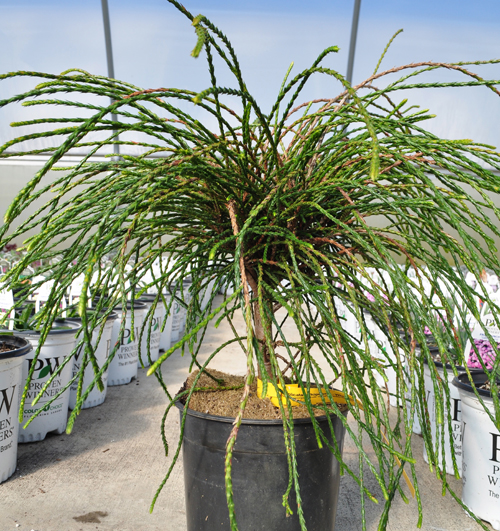
- Top dressing. They are carried out every spring, using any complex or specialized fertilizer for this purpose. The main thing is that it contains sufficient quantities of phosphorus and nitrogen.
- Preventive treatment of the plant to protect it from insects and diseases. The decorativeness and health of thuja folded are threatened by ants, aphids, thuja bark beetle and scale insects.Spray crop shoots 2-3 times a season with a solution of insecticides - for example, Fitoverma, Fufanon or Aktara. So you will reduce the risk of the mentioned scourge appearing on the ephedra. To prevent the occurrence of diseases, treat the plant stems with a fungicide (Fitosporin or Topsin) at the same frequency.
- Pruning. It is of a sanitary nature. During this event, all dried shoots and branches with damage are removed. The right time for its implementation is spring. In addition, the plant can be subjected to formative pruning throughout the summer.
- Warming. It is necessary to protect the culture from severe frosts that can provoke the freezing of the needles. For the purpose of shelter, non-woven material is used - for example, agrospan.
There are three ways to get offspring from an evergreen shrub: by cuttings, by propagating the plant by seeds or layering. The seed method is used less often than others, since the process of growing thuja in this way takes about 6 years.
Use cases
An ephedra with an original, but very decorative appearance can most often be seen in low hedges. He is responsive to haircuts, and therefore can be used in topiary art. The Vipcord variety becomes an element of mixed compositions, where flowering perennials perfectly coexist with this plant. It is planted in groups and singly against the background of an emerald green, neatly trimmed grass lawn; cultivated as a standard crop. An evergreen shrub looks spectacular in rocky, heather gardens, rock gardens and Japanese gardens. It is ideal for creating borders and mixborders. In addition, due to its small size, the variety is cultivated as a container plant. As such, it is used for landscaping balconies, loggias, terraces; areas around the gazebo, near an artificial decorative reservoir.
